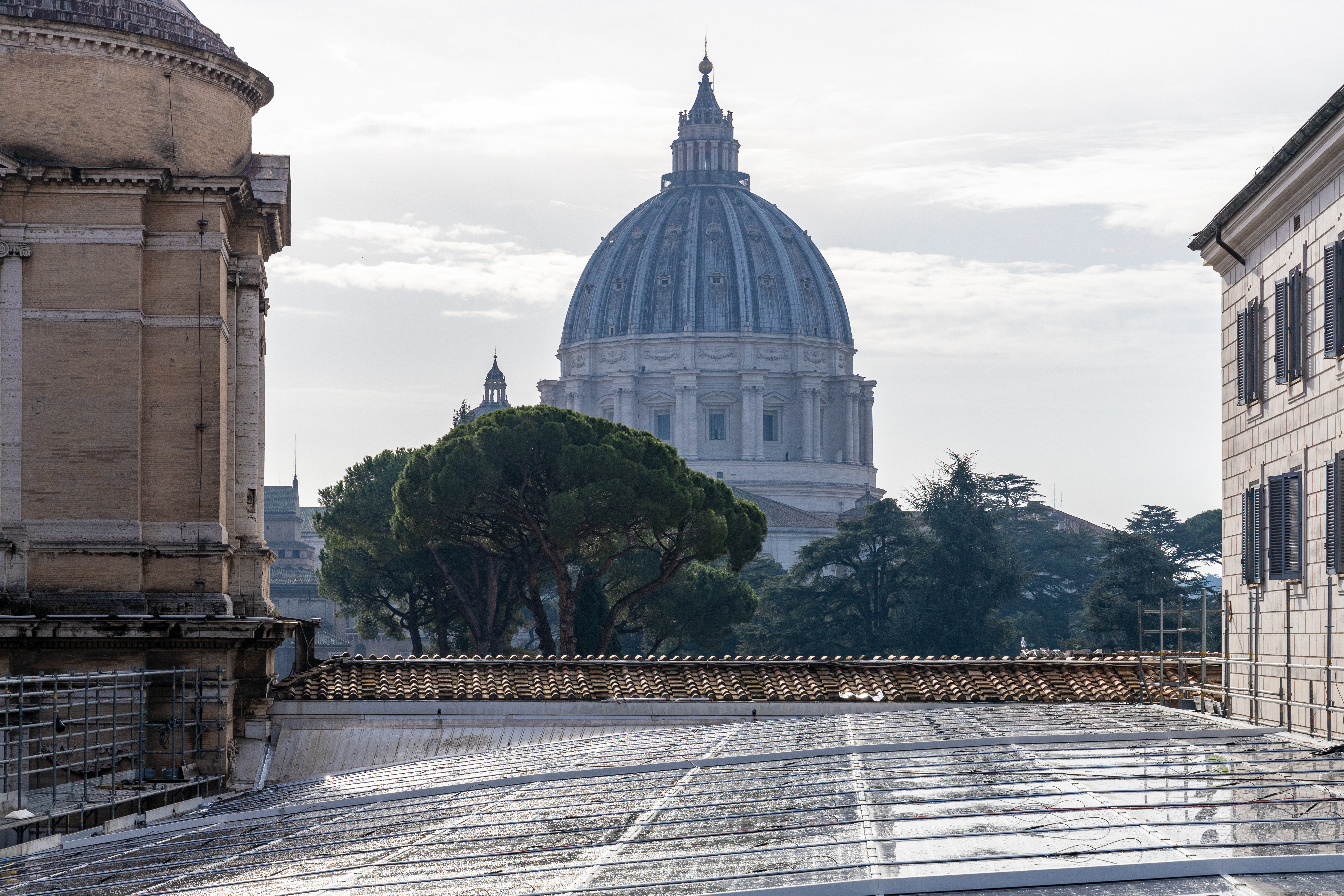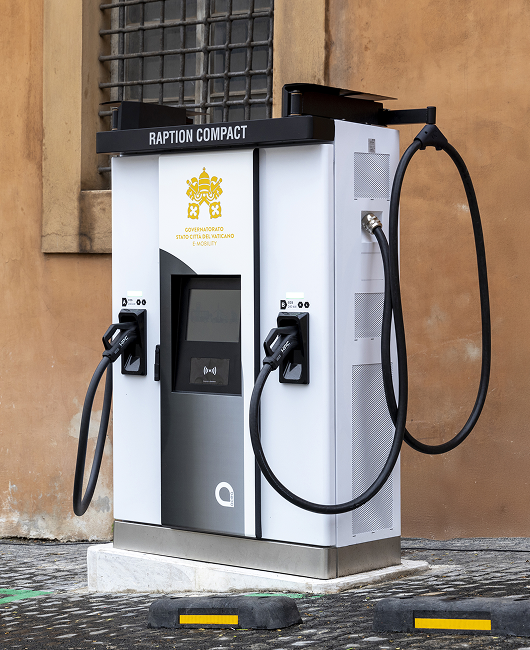

In December 2023, the Vatican Museums launched a unique sustainability project aimed at combining ecological transition with respect for their historical heritage.
The project began with a study of the glass roof at the main entrance, aiming to install new photovoltaic panels capable of producing renewable energy and regulating temperature without compromising aesthetic harmony.
The result is a project that embodies the concept of sustainable beauty, demonstrating how technology can seamlessly integrate into a universally recognized cultural site.
months of effort dedicated to designing, coordinating, and completing the project
photovoltaic panels installed at the Vatican Museum
an average of daily visitors to the Vatican Museums
The project spanned 12 months, running from December 2023 to December 2024.
To accommodate the nearly 30,000 daily visitors, Acea developed an internal and external scaffolding system
to ensure safety. To achieve this, most of the work was carried out at night.
Two construction cranes enabled simultaneous work on the north and south sides of the structure,
speeding up operations and ensuring efficiency and precision. Thanks to this solution, the work was completed within the agreed timeframe, respecting the scheduled opening of the Holy Door on December 24, 2024.4.
A technical study of the project with a focus on the compatibility between aesthetic conservation of the museum facilities and the integration of the photovoltaic system
A selection process and technical-economic validation of specialized suppliers, including the direct awarding of contracts for the photovoltaic plant, safety preparations and lifting equipment
A detailed development of the operative plan for the integration of photovoltaic system, with specific techniques of the windows
The definition of the Safety and Coordination Plan (SCP) to ensure the proper execution of the work in accordance with the legislation
Installation of the necessary structures for the work, with particular attention to the protection of affected areas
Removal of existing glass and installation of new integrated photovoltaic elements, along with the related sealing work
Creation of necessary connections for integrating the photovoltaic system into the existing infrastructure
Complete technical checks on all installed components and security systems
Start-up of the photovoltaic system integrated into the glass.

The installed photovoltaic panels use glass-glass BIPV (Building Integrated Photovoltaics) technology, ensuring resistance and durability.
The density of the cells has been optimized to strike a balance between transparency and shading, enhancing indoor comfort by protecting from high temperatures while allowing natural illumination.
These panels not only produce energy but also serve as a functional element that enriches the structure and enhances its beauty without intruding on the spaces of the original building.
Sustainability and energy efficiency
Renewable energy production
Better thermal insulation
Reduction of energy consumption
CO2 emission reduction
Comfort and enhancement of spaces
Greater indoor shading
Greater environmental comfort
Total architectural integration
Better aesthetic and design

The photovoltaic system at the Vatican Museum is just the beginning of a larger journey for Vatican City. Different projects are already underway, such as the installation of charging stations for electric cars and the gradual removal of combustion vehicles, further reducing the environmental impact.
With the addition of the new 221 kWp photovoltaic system inside Magazzini Vinaccia, the Vatican will reach a total capacity of 350 kWp, solidifying its role as a sustainability model.